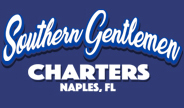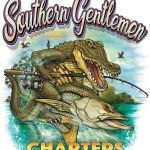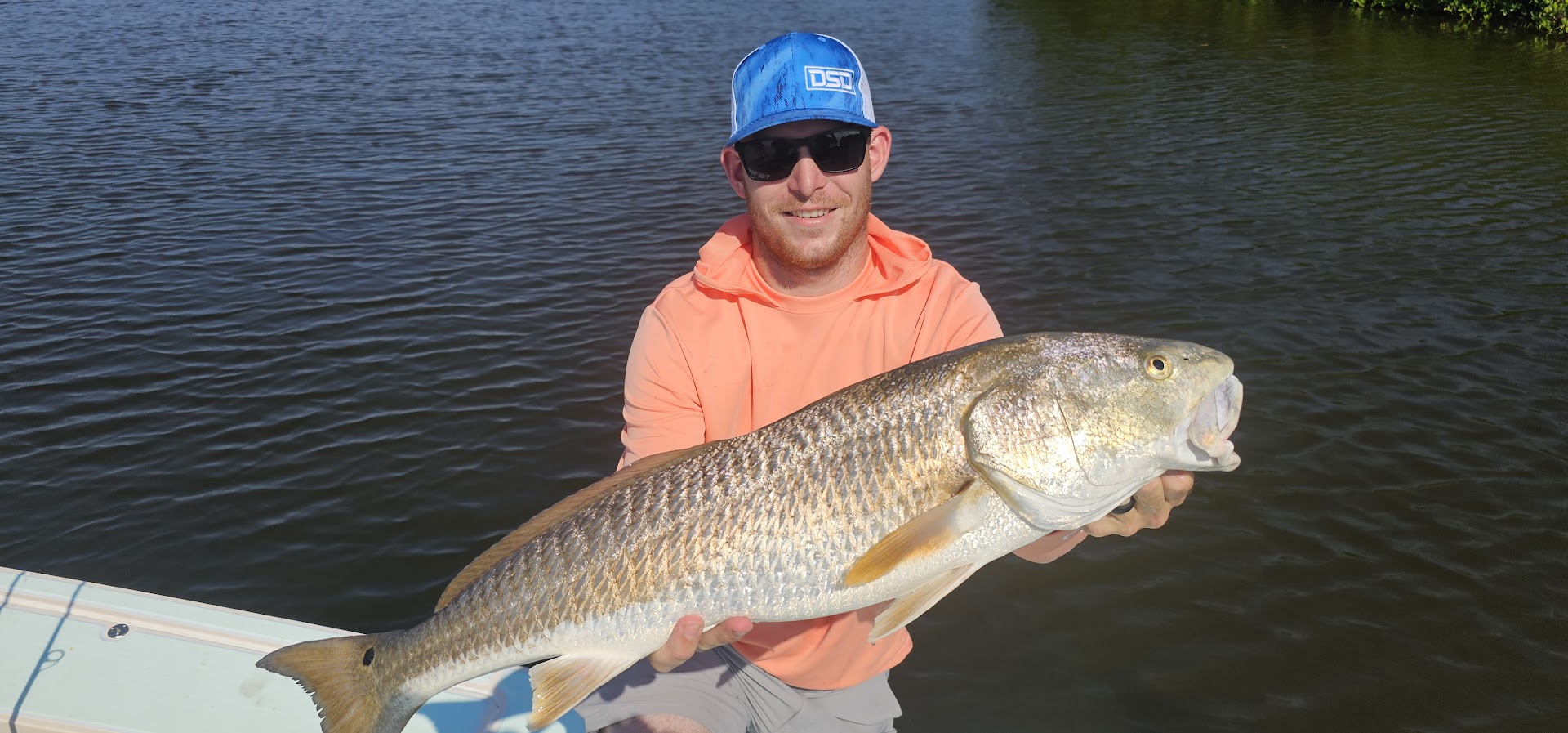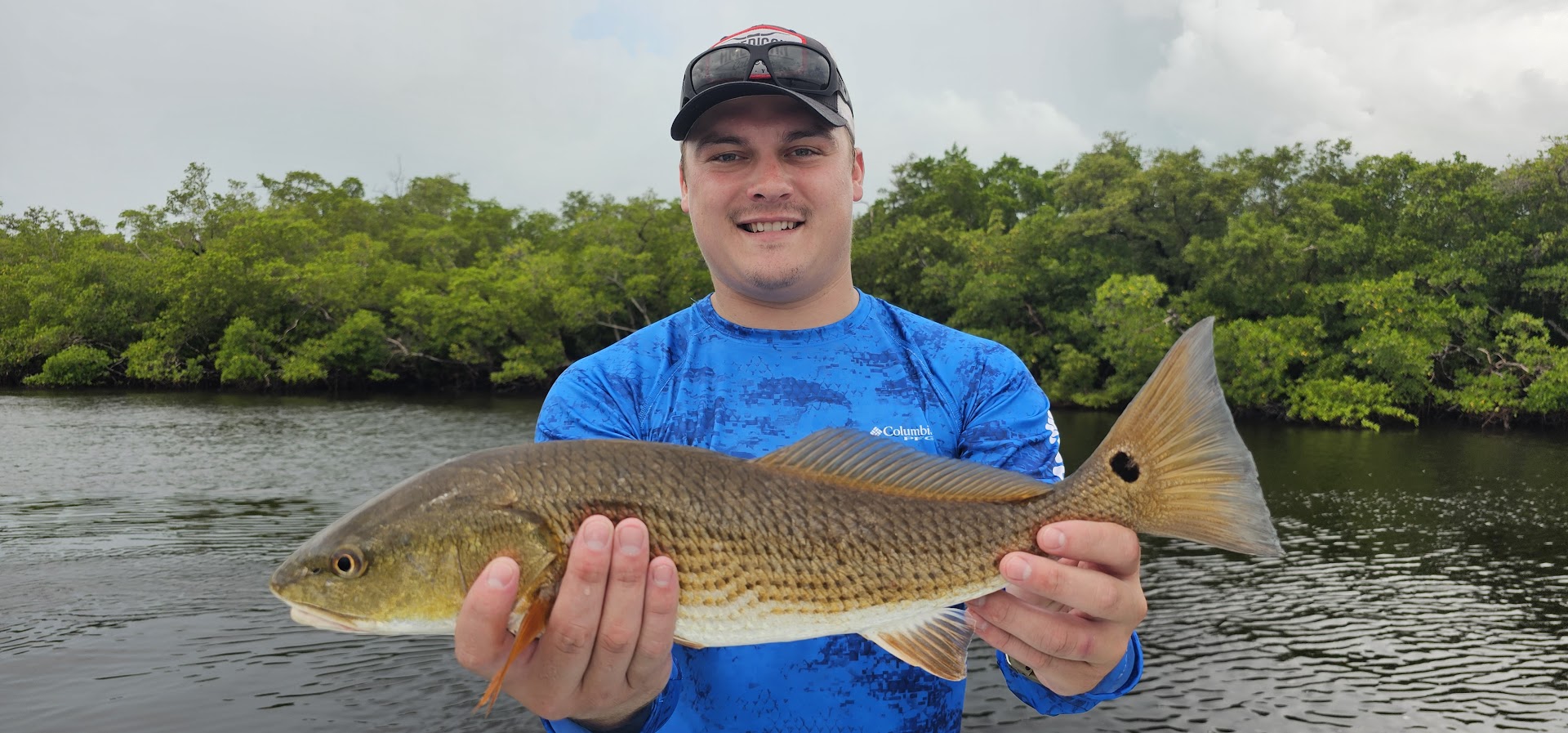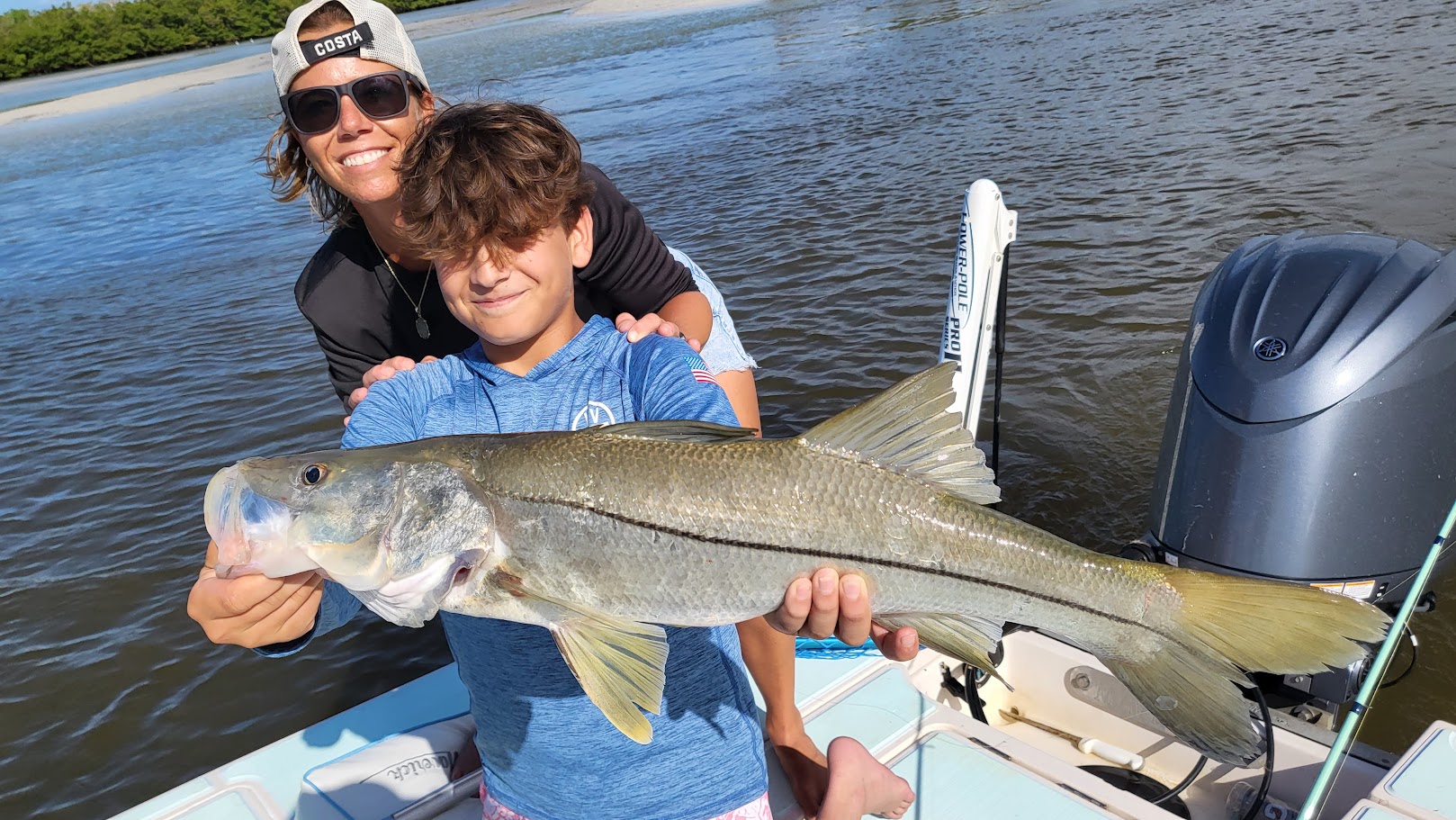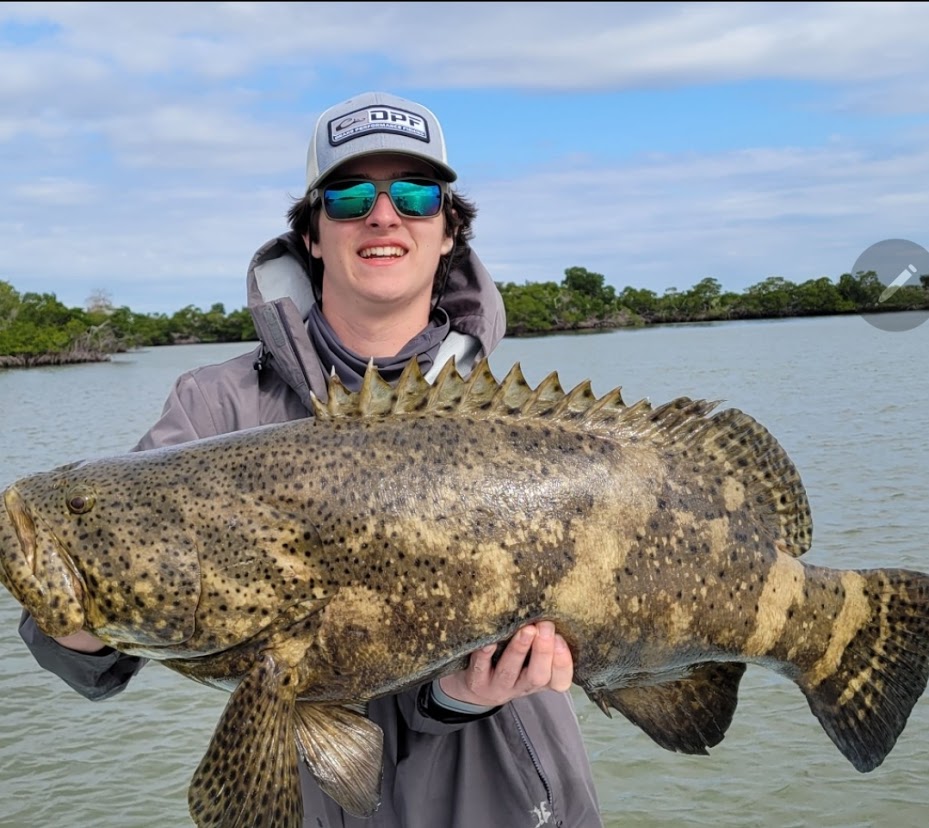
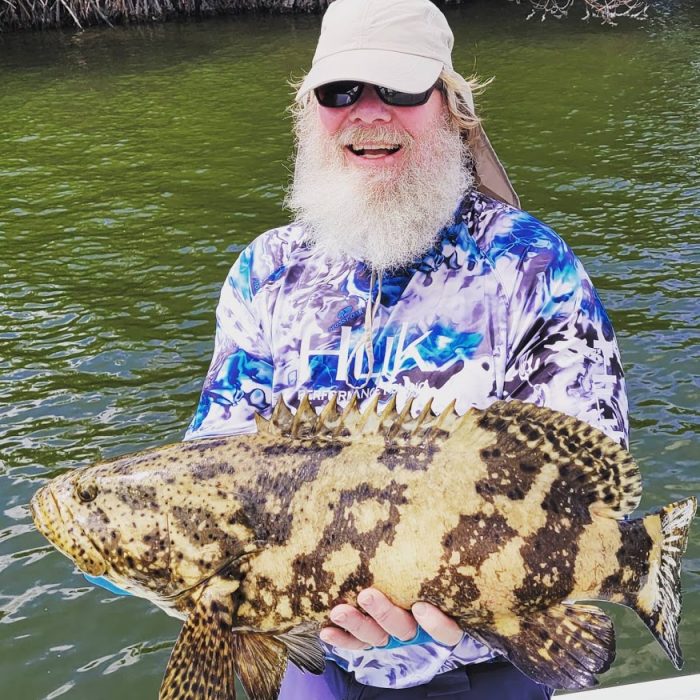
Most of my clients that have had the pleasure of catching a Jewfish or Goliath Grouper, as they were renamed in the 90’s,are aware that they are contributing to some valuable research in helping to determine the stock assessment research.
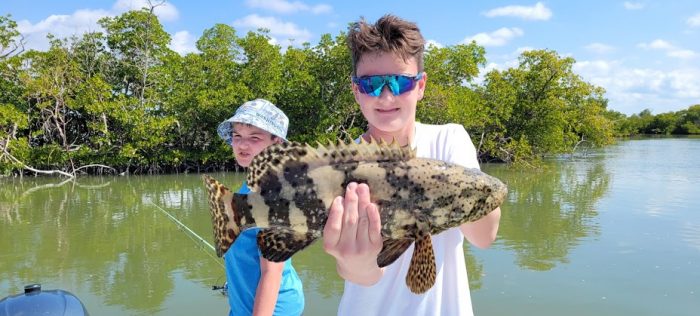
Each time we catch one, I carefully pull out my kit, snip off a piece of its pectoral fin, and put in in a vial and record the data of the catch including the location, time of day, and size of the fish.
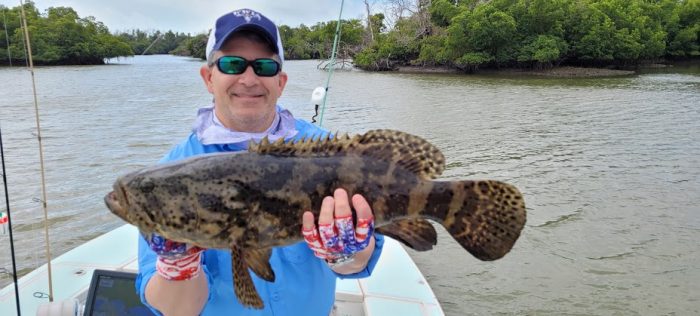
Its exciting enough to catch one of these bruisers on the light lines we usually use, and it is made even neater, knowing we are all contributing to s better understanding of the species and how many are actually out there.
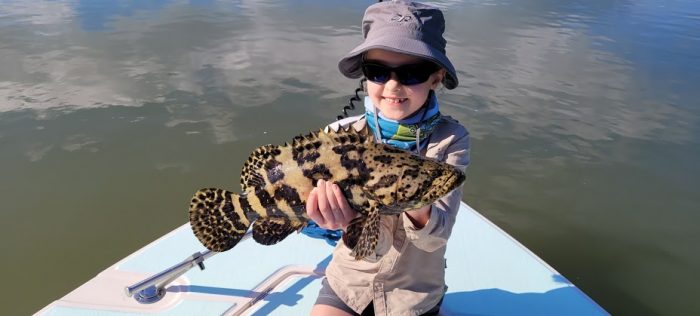
We are basically in the epicenter of the juvenile nursery in the 10,000 Islands, and our research is really helping the scientists get a handle on whether the stock can support a limited harvest down the road.
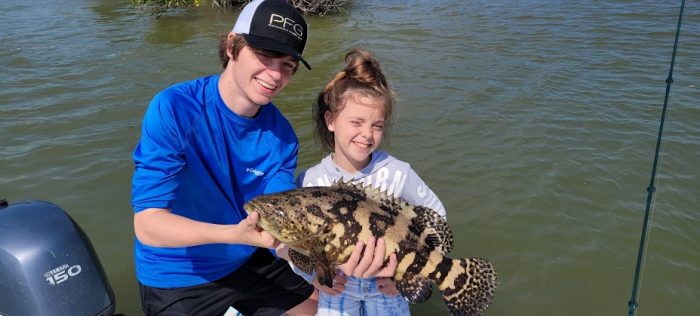
Everyone always wants to know how they taste and why when will we be able to keep one for the table. They are excellent table fare, and hopefully our contributions are going to help the scientist come up with a fair and sustainable balance that will allow limited harvest.
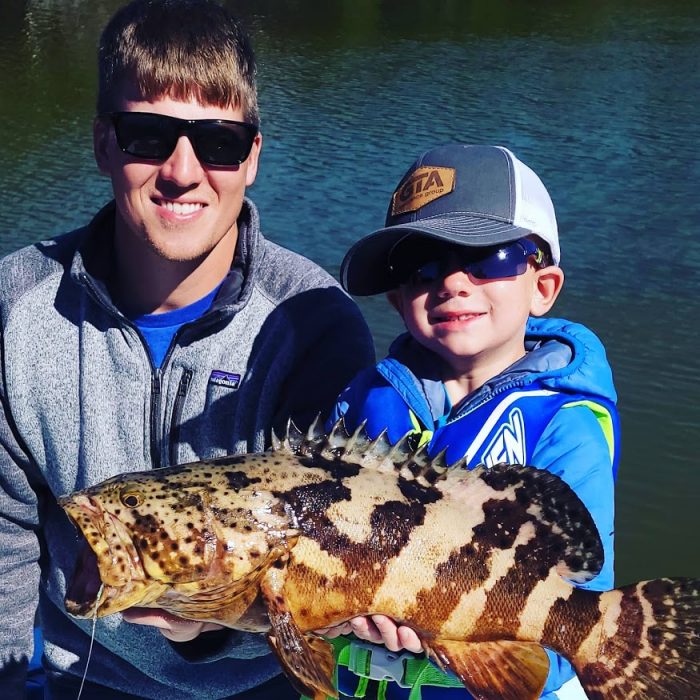
I wanted to add some direct commentary on the project from Dr. Robert Ellis, who is one of the project Research Scientists with The FWC in St. Petersburg on the study, so anyone that mat still be wondering what their fin clipping was specifically contributing to, could maybe get a better understanding.
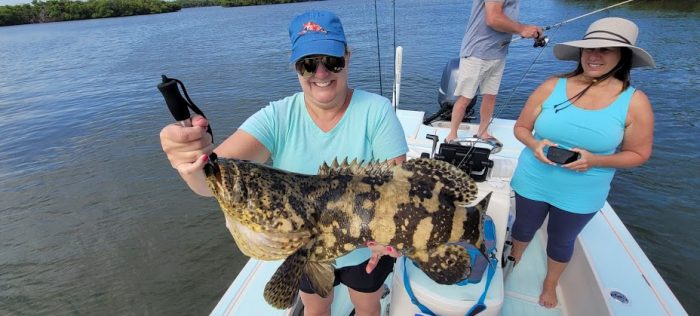
From Dr. Ellis: For some background on the project – the situation with Goliath grouper is particularly difficult from a management perspective. We can say qualitatively that the moratorium has been largely successful in that there are more Goliaths in state waters than there were in 1990. That’s good! The extreme option of closing down the fishery entirely has worked and the population has rebounded. But by how much? Unfortunately, we can’t answer this with the typical tools we use to do stock assessments. We need to know how many Goliath groupers are there today, and are there enough that we could reopen the fishery, even to a limited extent? The type of information that we would usually use in a stock assessment – catch trends over time from various fisheries – isn’t available for Goliaths because there are no landings data. We have some data from diver surveys, shark longline bycatch, and the Everglades NP creel survey, and these have been used with some alternative stock assessment methods, specifically in 2006, 2010, and 2016, but all failed to reach the rather high bar of “suitable management advice.” Basically these models all give results with too much uncertainty for the stock assessment scientists to be confident in the results. There’s also some concern that most all of the Goliaths we find are in central & south Florida, where in the past they were found across the entire Gulf and Caribbean. So while they may be rebuilt in some places, the population probably isn’t quite as large as it needs to be to support a fishery. Fortunately, there is another method that might work: using genetics to estimate the adult population size. This has been done successfully in the past for bluefin tuna, another species that has really been hammered by the fishery. For this we need lots of DNA samples from both adults and juveniles over many years that are used to identify Parent-Offspring-Pairs, or POPs. If we know how many adults we sampled, how many juveniles we sampled, and how many POPs we found, then we can extrapolate back to how many adults must there have been to spawn enough offspring to make the number of POPs we found. Of course, we need hundreds of samples, more than we can get ourselves, so we recruit willing anglers and guides like yourself to help us collect enough tissue samples. Our genetics team is actually analyzing the data we’ve collected from 2017 to mid-2020 now and we should have some preliminary results in the next few weeks, which should hopefully tell us how many more samples we need and narrow down the regions to focus on. We’re especially glad to get your contributions, given that the Ten Thousand Islands region is the primary nursery habitat for Goliaths in Florida.
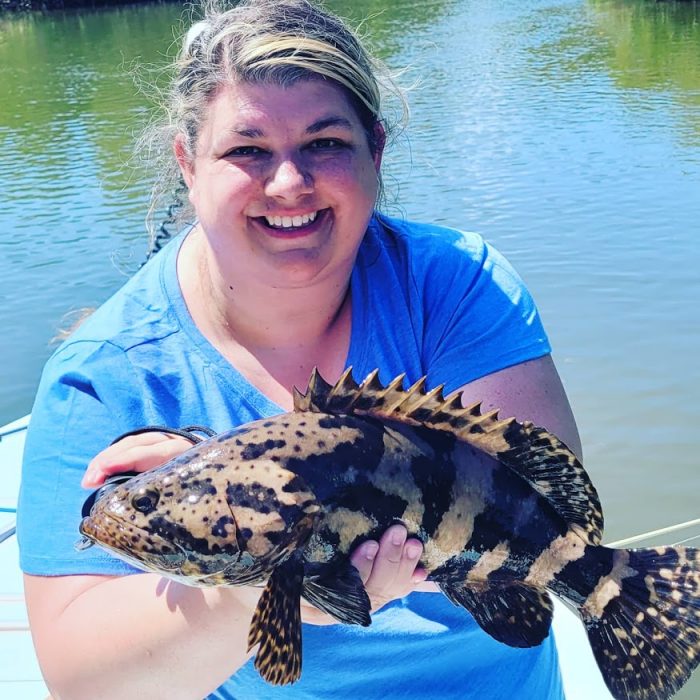
I hope all these pictures and the excerpt from an email Dr. Ellis recently sent me gets you as excited as it does me! Every time we catch one, it is a flat out rod bending, drag ripping mystery fish, until that big brown and gold profile wallows up from the deep and into the landing net.
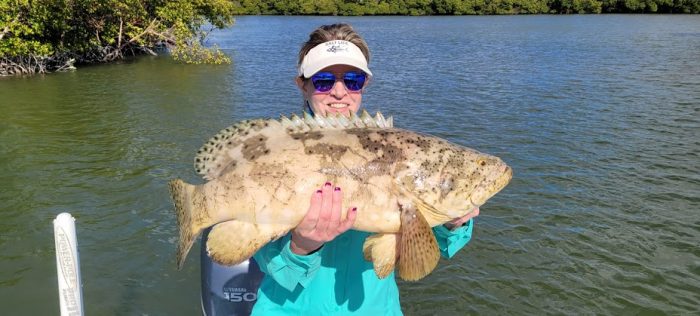
Let’s load up the family, or a couple of buddies and go battle one of these ‘little ones’ or go offshore and tangle with one of the super giants!
Tags: familyfishing, familyfun, fwc, goliathgrouper, goliathgrouperharvest, goliathgrouperresearch, jewfish, kidsfishing, kidswhofish, marcofishingguide, marcoinshorefishing, marcoislandfishing, naplescharterfishing, naplesfishing, naplesfishingguide, naplesflorida, naplesinshorefishing, southerngentlemenfishing, takeakidfishing